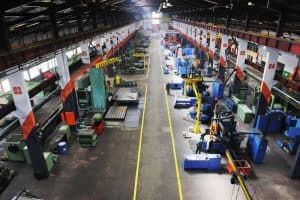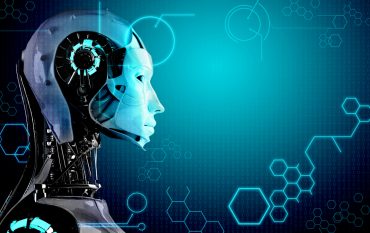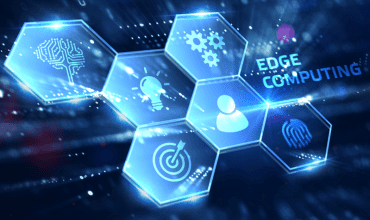
IoT-extended AI brings three main benefits to manufacturers: supply chain optimization, smart manufacturing, and product or service innovation,
There’s a wealth of data now streaming in from the numerous edges of IoT, so it’s only natural to start thinking about ways to apply artificial intelligence (AI) to deliver valuable insights to the business. For manufacturers, this may be a game-changer, dramatically cutting costs and accelerating their entree into service businesses. However, many are only at the beginning of this journey.
The impending convergence between IoT and AI was explored at a panel at the recent AI World conference in Boston, moderated by Les Yeamans, executive editor of RTInsights.
See also: Germany Turns Manufacturing into an IoT Art Form
The potential for IoT-extended AI brings three main benefits to manufacturers at this time — supply chain optimization, smart manufacturing, and product or service innovation, said Reid Paquin, research director with IDC. Currently, he added, “smart manufacturing is where most companies are starting and focusing their investments. This is particularly true with process manufacturing, specifically asset management.” On the discrete manufacturing side, he says, “the big opportunity is products and services — a lot of manufacturers are trying to get out products faster, but then also trying to change their product to service mixes, moving to servitization.”
Moving to a data and AI-driven enterprise may take time for many manufacturers, panelists agreed. “In any data science or AI project, the first step is collecting and organizing your data,” said Zachariah Eslami, delivery leader, data and AI expert labs and learning for IBM. The challenge is bringing data together from disparate parts of the enterprise, he observed. “The issue is the input from data and data collections, warehouses often are distributed among different IT groups, different teams that are using it without a single repository or knowledge catalog, that you can take and distribute the data and manipulate it, extract these insights from it.”
Another challenge to IoT-AI projects is a general lack of skills, Eslami continued. “That is both in the sense of being able to adapt to computer science, understanding, and learning and using Python or R notebooks, and really getting a clear understanding of what it is to clean data, prep it, and then start doing analysis on it, so that you can build machine models on top of it.”
When it comes to starting the AI journey, “where you stand depends on where you sit,” said Ryan Martin, principal analyst with ABI Research. “If you own a manufacturing plant that is of a decent size — a couple hundred thousand square feet — start with condition monitoring or asset tracking, Asset tracking is going to be by far the most relevant, as it helps the costs, it helps the company stay organized.” Predictive maintenance is another starting point, as “it doesn’t make sense to send someone out to inspect all the different fire extinguishers that are out there on a monthly basis if only four of them need to be replaced.”
Paquin agreed that asset management is a good starting point for IoT-enhanced AI, along with vision-based quality systems. In addition, “all of the large ERP providers are trying to weave AI into their applications, especially in the financial side and a planning side.”
Panelists also discussed the employment of digital twins for manufacturing, whether it’s implementing a digital twin for a part, for a machine, for a whole factory, for the products in a factory. “Manufacturing is a very big space for digital twins,” said Eslami. “NASA started implementing it first, GE does it for jet engines, Siemens does it for alternative energy, Chevron does it for oil field distribution. “The great thing about digital twins is that underlying all them is a model, which takes data and can test various circumstances and situations. With AI, you can input and test multiple variables in real-time, and adjust performance, and see how that will react over time. It’s a huge cost savings.”
The impending arrival of 5G networks — which will better facilitate real-time machine-to-machine networks — was also examined. “5G is going to happen like 4G came out faster than 3G, 5G will come faster than 4G,” Martin predicted. “What’s interesting about 5G are the capabilities that come with it — deterministic networking. That’s to say, ‘okay, it’s more important to tell that robot to stop than have the vibration sensor keep going.’ That will come with the 5G specification down the line, in the 2021-to -2025 timeframe.”
Martin added that “it’s going to be a while before you really start to see things, but the early trials we are seeing with 5G are incredibly compelling, the technology is doing what they say it will, its just a matter of wrapping the right standards around it and getting it to market. “




























